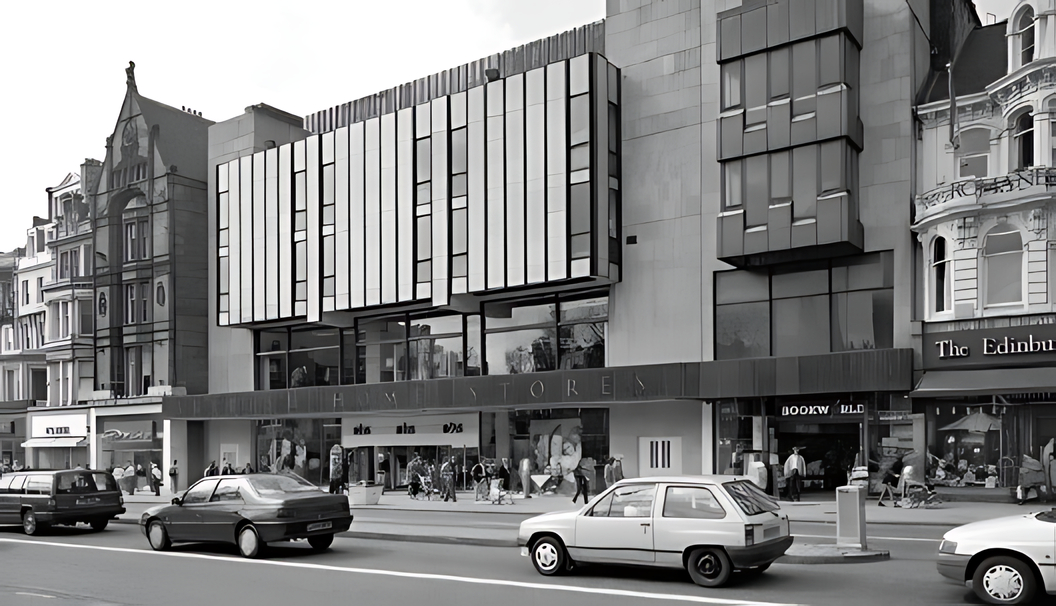Estimated reading time: 3 min
British Home Store’s flagship store on Princes Street, Edinburgh, closed its doors for the final time recently as the business entered administration and was wound down, drawing the curtain on one of Britain’s most recognisable brands as it disappeared from the British high street for good. Over 160 BHS stores have closed in recent weeks across the UK including its iconic branch on Oxford Street in London. The closure of 64 Princes Street is one that has been keenly felt in Scotland, leaving a significant void in Edinburgh. But what of the building itself, its history, and its future?

This grade-B listed building still dominates one of the UK’s most famous streets thanks to its iconic panelled design that became synonymous with 60’s modernism. British Home Stores first Scottish outlet was seen as a groundbreaking example of design at the time it opened, with particular attention lavished upon its use of escalators throughout the building. Historic Scotland described it as “an unusually excellent example of chain-store architecture”. The building has a Bon Accord granite fascia with the store’s name on it and is symbolic of 20th Century architecture created using materials that were not part of the traditional palette.
In recent years Historic Scotland have attempted to spake a debate about the nature of architecture, particularly the country’s postwar architecture, which is fast disappearing. Modern buildings, Historic Scotland argue, are now, worryingly, seen as expendable by the general public. Similarly, listed buildings tend to be associated with Edwardian or Victorian designs rather than outstanding examples of modern architecture or design.
Dr Deborah Mays, Historic Scotland’s Head of Listing, has spoken out about the need to re-evaluate how we see postwar buildings. “They are under threat and disappearing at quite a rate. Postwar buildings are perceived as being less long-lasting than Victorian ones when in fact they may last longer. We need to inform people and get them to appreciate the postwar legacy. We want to share the celebration and enjoyment of our postwar buildings. While many people still view listed buildings as having to be traditionally crafted, the number of outstanding examples of architecture and design that remain need to be considered as an important part of our heritage and just as revealing of our past as older buildings.”
In the case of 64 Princess Street, Dr Mays warning appears to have been heeded. Unlike many BHS buildings across the UK, this one is deemed too significant to disappear completely with plans already approved to turn the vast premises into a hotel with a rooftop bar making full use of it’s prominent location. It’s a wildly held truism that people in the 1930’s had little liking for Victorian architecture, often deeming it ‘too modern’. Thankfully, RMJM‘s building in the heart of Edinburgh’s city centre, though still modern, is a little more appreciated. Edinburgh’s historic appeal is complimented perfectly by having this at the heart of the urban landscape.


